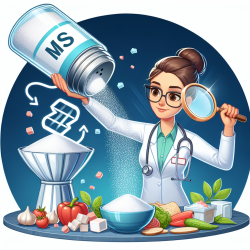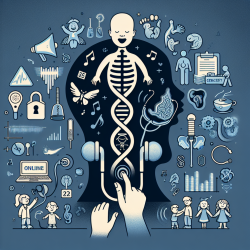Understanding Neurotoxicity: A Call to Action for Practitioners
As practitioners committed to improving child development outcomes, it is crucial to understand the environmental factors that may impact the neurodevelopment of the children we serve. Recent research highlights the neurotoxic effects of lead, methylmercury, and polychlorinated biphenyls (PCBs) in relation to the Great Lakes, shedding light on potential risks that could affect cognitive and behavioral development in children.
The Research Findings
The study, conducted by Rice (1995), provides ample evidence identifying lead, methylmercury, and PCBs as neurotoxic agents. The research indicates that typical body burdens of lead, common in industrialized environments, can produce behavioral impairments in children. Similarly, methylmercury has been identified as a neurotoxicant in both adults and developing organisms, with effects replicated in animal studies. High-dose PCB exposure has been linked to developmental toxicity, with animal studies suggesting that even low-level exposure can lead to behavioral impairments.
Of particular concern is the finding that current levels of methylmercury and PCBs in fish tissue from the Great Lakes exceed the safety thresholds for human health. While Great Lakes fish and water do not pose a significant risk for increased lead intake, the current human body burden of lead is within a range where functional deficits are probable, emphasizing the need for proactive measures to eliminate point sources of lead contamination in the region.
Implications for Practitioners
As practitioners, understanding these findings is crucial for several reasons:
- Awareness: Being informed about environmental neurotoxins helps in identifying potential risk factors affecting the children we work with.
- Advocacy: Practitioners can play a vital role in advocating for policies aimed at reducing exposure to these harmful substances.
- Education: Educating families about the potential risks associated with consuming fish from the Great Lakes and other contaminated sources can help mitigate exposure.
- Research: Encouraging further research into the effects of these neurotoxins can lead to more comprehensive strategies for preventing exposure and mitigating effects.
Steps to Take
To implement the outcomes of this research, practitioners can:
- Stay updated on the latest research regarding environmental toxins and their impact on child development.
- Incorporate discussions about environmental risk factors into therapy sessions with families.
- Collaborate with local health departments to support initiatives aimed at reducing environmental contamination.
- Participate in professional development opportunities focused on environmental health and its implications for speech and language pathology.
Conclusion
The research on neurotoxicity in relation to the Great Lakes serves as a critical reminder of the environmental challenges that can impact child development. By staying informed and proactive, practitioners can contribute to creating healthier environments and better outcomes for children.
To read the original research paper, please follow this link: Neurotoxicity of lead, methylmercury, and PCBs in relation to the Great Lakes.










